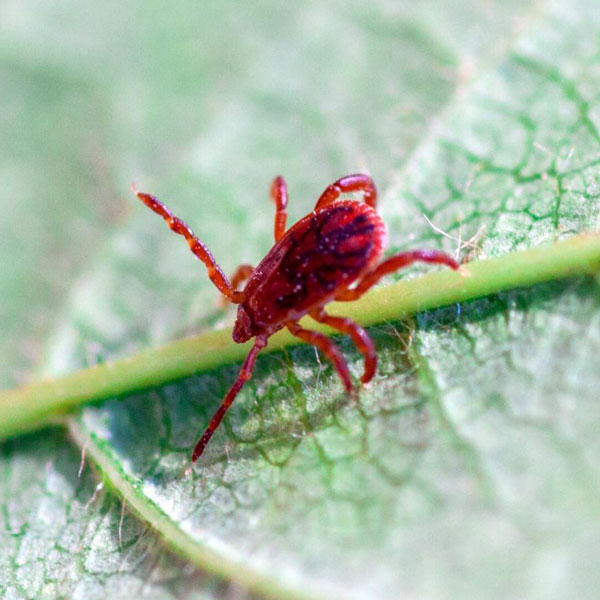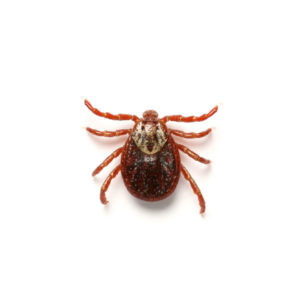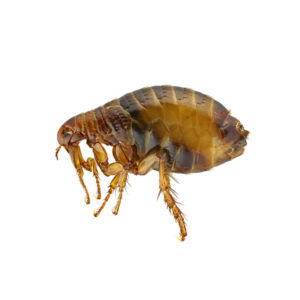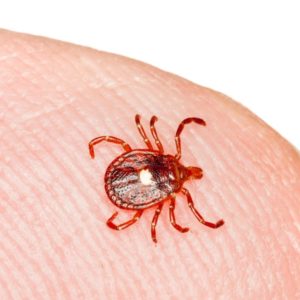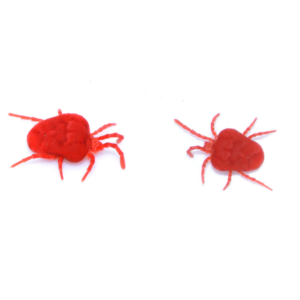Chigger Mite Identification
What Do Chigger Mites Look Like?
Chigger mites, also known as trombiculid mites, are tiny and reddish-orange in color. They are almost invisible to the naked eye, measuring around 0.2 to 0.4 millimeters in size. During their larval stage, they have 6 / 8 legs and a distinct segmentation. They are often found in grassy and wooded areas and can cause skin irritation and itching when they bite humans.
Signs of a Chigger Mite Infestation
Signs of a chigger mite infestation include red, itchy welts or bumps on the skin, particularly in areas where clothing fits tightly or where the skin is thin, such as ankles, waistline, and groin. These bites may appear clustered together and can be accompanied by intense itching, which may worsen within a few hours to days after exposure to chigger-infested areas.
Habitat, Diet, Life Cycle & Bites
Where Do Chigger Mites Live?
Chigger mites prefer damp, grassy, and wooded areas, especially at the edges of forests. They can be found near lakes and streams, and even on your lawn. Adult chiggers may often be seen as large brilliantly red-colored mites crawling over lawns and pavements. Adult chiggers spend winter underground and will deposit eggs during the first warm days of spring. The adults soon die and the eggs hatch into chiggers, which crawl about and eventually make contact with people or other hosts.
Diet of a Chigger Mite
Chigger mites, in their larval stage, do not actually “eat” but instead feed on the fluids in the skin of their hosts. They attach themselves to the skin and inject digestive enzymes that break down skin cells, allowing them to consume the resulting fluid. After feeding for a few days, they drop off their host to continue their life cycle.
Life Cycle of a Chigger Mite
The life cycle of a chigger mite typically consists of four stages: egg, larva, nymph, and adult. Larvae, the parasitic stage, attach to hosts (including humans), feed on skin cells, and then drop off. After feeding, they molt into nymphs and then into adults. Adults do not feed on humans but instead feed on plants and small insects before reproducing and laying eggs to start the cycle anew.
Do Chigger Mites Bite?
Yes, chigger mites bite humans during their larval stage. They attach to the skin and inject saliva containing digestive enzymes that break down skin cells, allowing them to feed on the resulting fluid. This feeding process causes red, itchy welts or bumps on the skin, known as chigger bites. However, adult chigger mites do not bite humans.
Are Chigger Mites Dangerous?
Chigger mites usually hide in thick brush, grass, parks and gardens, grassy fields, and in moist areas around rivers or lakes. All of these areas are popular with humans for recreation, hiking, and camping. After coming into contact with flesh, they will settle down and begin to feed. Most chiggers will attack around the ankles or under the knees, although some go higher up to attack the crotch and armpit areas. Once bitten, the body will react to the digestive enzymes that chiggers use to liquefy skin cells, causing a rash and intense itching that begins a few hours after they have fed.
How to Get Rid of Chigger Mites
To protect against chigger mites, wear long clothing and use insect repellents containing DEET or permethrin when venturing into chigger-prone areas. After outdoor activities, shower with soap and water to remove any attached chiggers. Wash clothing in hot water and dry on high heat to kill any remaining chiggers. Treat outdoor areas with insecticides labeled for chigger control, focusing on tall grass and brushy areas.
If you are dealing with chigger mites, it’s important to always enlist the help of a professional tick & mite control expert.
Chigger Mite Prevention Tips
To prevent chigger mite bites, wear long sleeves, pants, and closed shoes when in chigger-infested areas. Apply insect repellents containing DEET or permethrin to exposed skin and clothing. Avoid sitting or lying directly on the ground in grassy or wooded areas. After outdoor activities, promptly shower with soap and water and launder clothing in hot water to remove any chiggers. For more information see our prevention tips to keep fleas and ticks away.
Need help with Chigger Mites control?
FAQs
How do you get chigger mites?
Chigger mites are commonly acquired when walking or sitting in grassy or wooded areas where they reside. They attach to human skin, often in areas where clothing fits tightly or where the skin is thin and bite to feed on skin cells.
How do I know if I have mites or chiggers?
Mites and chiggers can cause similar skin reactions, such as red, itchy bumps or welts. However, mites are typically visible to the naked eye, whereas chiggers are nearly microscopic. If you notice tiny, reddish-orange insects on your skin or clothing after outdoor activities, they are likely chiggers.
Can chiggers infest your house?
Chiggers do not infest houses like other pests. They primarily inhabit outdoor environments, particularly grassy or wooded areas. However, they can be accidentally brought indoors on clothing or pets. Once inside, they cannot survive for long without suitable outdoor habitats and typically do not establish infestations indoors.

